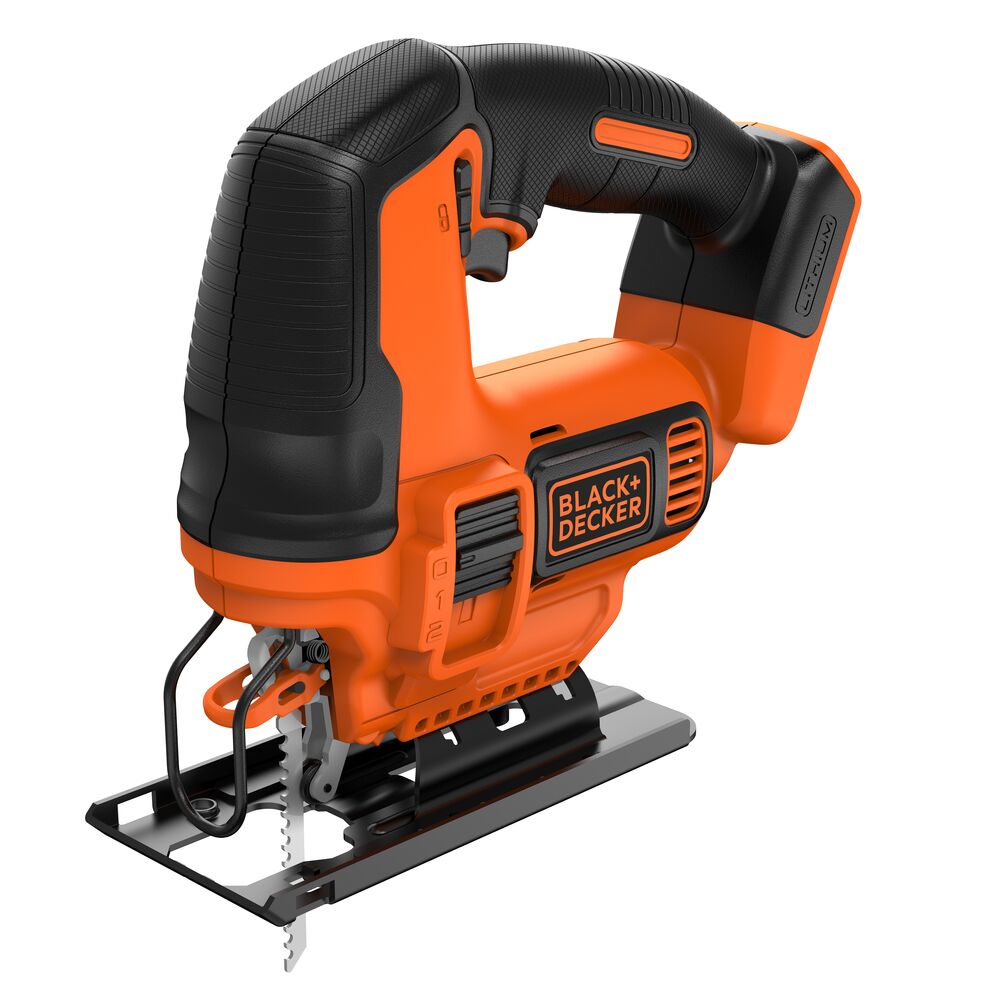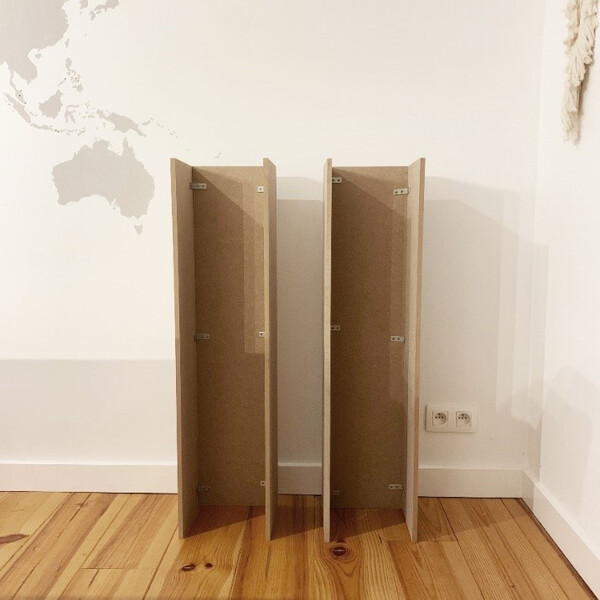A Decorative Mantelpiece
Skill Level: Beginner
In this post, Noémie explains how you can create a fake mantelpiece step by step to enhance the interior of your house.

This bench is easy to make and can even be personalised with a splash of colour.
Products You Will Need
Things You'll Need
- MDF boards with a thickness of 12 mm (I had everything cut to size in the do-it-yourself shop; they almost all do it for free nowadays. Ideal for when you don't have the material at home!) ; I'll give you the dimensions you need below.
- A 10 cm wide pinewood plate with a thickness of 1,2 cm (I needed a length of almost 1 meter) : we use it for the skirting boards.
- Wooden moldings : I chose 2 different types: one with a profile (for the top plate; for this I needed a little more than 1m50), and the other flat (for around the fireplace; for this I needed a little more than 2m10). I chose fine moldings for a minimalist touch, but it is purely decorative so take what you like yourself!
- 23 metal corner anchors
- screws of 12 mm (so that they do not penetrate the MDF boards!)
- wood paste
- wood glue
- a couple of glue clamps
Step by Step Instructions
Step 1. Get Started
You start by cutting the MDF boards to the right size. I bought a single 122 x 244 cm board (these are the standard sizes in my favourite DIY store), which I sawed into the following pieces:
- 1 panel of 113 x 23 cm: this will be the top of the mantelpiece.
- 4 panels of 100 x 20 cm: these are the side and inside walls.
- 2 panels of 100 x 25 cm: these are the vertical front walls.
- 1 panel of 60 x 25 cm: this will be the horizontal front wall of the mantelpiece, in the middle above the fireplace.
The salesman was very happy that I had made a sketch of how to saw! To make his life easier and to avoid mistakes, I advise you to do the same! This is my drawing (and of course I have saved the surplus for future projects):
Step 2. Assemble the Mantelpiece
Once the MDF boards have been cut to size, you’re ready to assemble the mantelpiece.
TIP: I have used glue, corner anchors and screws for every installation: the glue alone is not enough, but it does help to install the MDF boards correctly and as close to each other as possible.
I didn't use screws on the edges of the MDF boards, because the boards could split there and weaken the structure. And with the glue and the metal corner anchors this is really not necessary!
Start by assembling the 2 pillars of the mantelpiece: each pillar consists of a 100 x 25 panel (centre) and two 100 x 20 panels. In each corner I have placed 3 corner anchors; six per pillar.
Then we can connect the pillars with a panel of 60 x 25: flatten the pillars, with the 25 cm wide surface on the floor. Place the 60 x 25 panel between the two pillars and fix it with 2 corner anchors on each side.
This is important to be as flat as possible, on a level surface, so that the seams between the panels are as flat as possible and invisible.
Now you can lift the mantelpiece, turn it over (the top down, the bottom up), and place it on the 113 x 23 panel that will serve as the top shelf.
In the dimensions I have given you, I have left a margin of a few centimetres on 3 sides (the 2 sides and the front) to be able to place the moulding. So make sure you correctly center the chimney on the top, and only align the back side (the other 3 sides protrude a few millimeters).
Secure everything with the remaining corner anchors (2 in each pillar and 3 in the middle).
The structure is now completed!
Step 3. Start Sanding
Now that the structure is ready, it's time to finish the mantelpiece.
Sand the visible seams (especially those of the front panels, so that the transition between the various MDF boards is as invisible as possible). You can also sand the edges and corners for a softer, more realistic look.
Apply wood paste to fill in the gaps between some joints (especially on the sides). Some wood pastes must be sanded after drying.
Step 4. Mold
Now it is time to do the moldings: Saw the mouldings at an angle so that you get nice connections (you can do this with the jigsaw, but also with a hand saw and a mitre box: an optimal tool for perfect connections).
Secure them with wood glue, and place a few glue clamps so that everything stays in place.
I chose to put baseboards on my mantelpiece, to give it an even more realistic look. I cut 4 skirting boards to size and glued them to the underside of the pillars (be careful to cut the corners at an angle: for this I used the "45° blade" function of my jigsaw: so practical!).
To make sure that the mantelpiece is as close to the wall as possible, it is important to provide recesses on the back of the mantelpiece (on the 4 vertical panels) so that the baseboards of the room underneath it fit. Measure the baseboards of the wall where you want to place the mantelpiece, and apply these dimensions to the bottom of the mantelpiece: cut away the cubes, and that's it!
Step 5. Time to Paint
Now the mantelpiece can be painted. You can choose any colour, whatever you like.
I have applied 3 layers of Levis special furniture paint: no varnish is needed to protect the surface from bumps and scratches.
Attention: MDF material is very absorbent, so more layers are needed than for a normal surface. I first painted the corners and the mouldings with a fine round brush, and then the large surfaces with a small paint roller.
Step 6. Result: Tadaaa!
I think the result is very satisfying; it looks like a real chimney! Well, the fireplace is missing, that's true. But I think it's perfect for creating the illusion, it gives the room a warm, elegant and cosy touch, and it's an ideal place for decoration: place some of your favourite objects on the top, some frames and some candles in the fireplace, a nice basket with blankets and pillows in front,.... It really does form a beautiful whole.
Original source: https://pierrepapierciseaux.be/diy/diy-70-une-fausse-cheminee/









